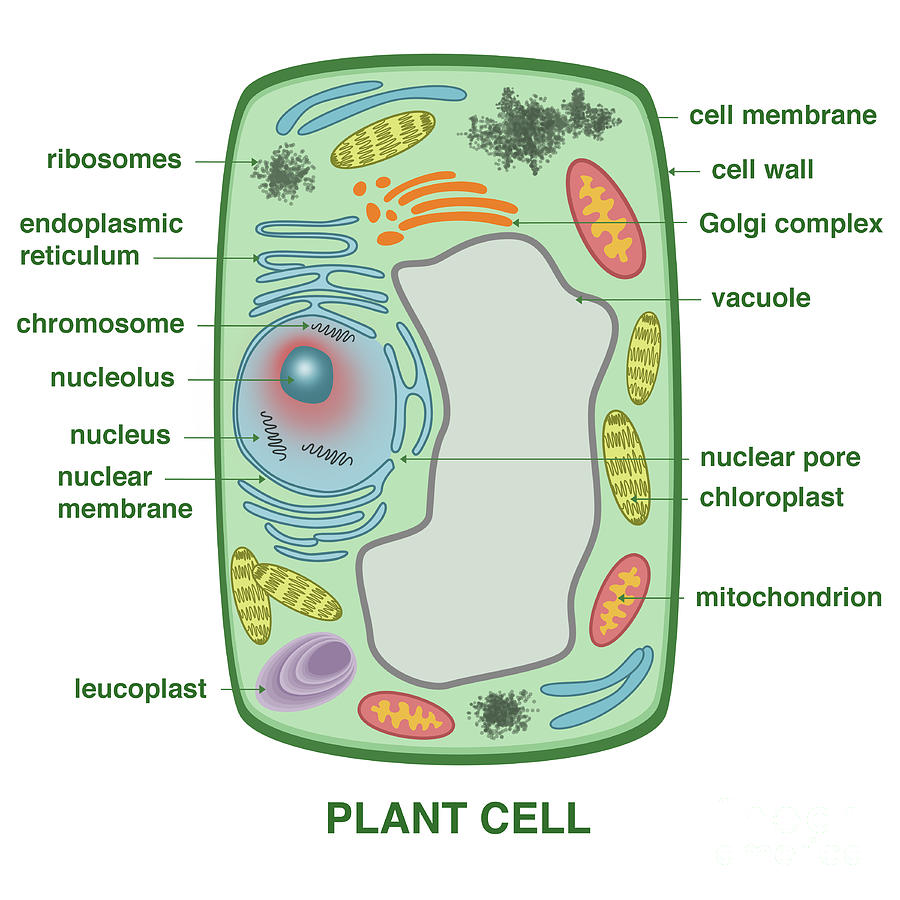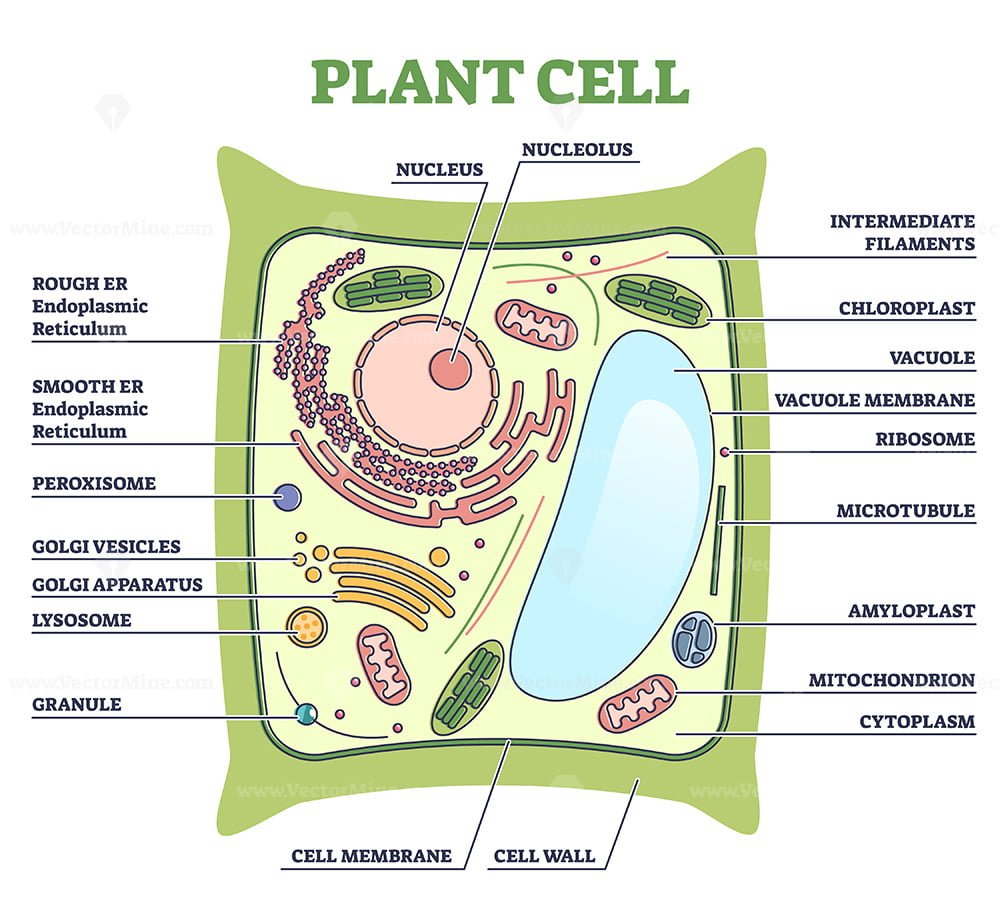
Plant Cell Diagram, Definition, Structure, Function & Parts
The Molecular Expressions large plant cell model allows a close-up look at the components of a plant cell. Anatomy of the Plant Cell. Like other eukaryotes, the plant cell is enclosed by a plasma membrane, which forms a selective barrier allowing nutrients to enter and waste products to leave. Unlike other eukaryotes, however, plant cells have.

Pin on GCSE Science paper 1
Plant cells are the basic unit of life in organisms of the kingdom Plantae. They are eukaryotic cells, which have a true nucleus along with specialized structures called organelles that carry out different functions. Plant cells have special organelles called chloroplasts, which create sugars via photosynthesis.

Plant Cell Diagram Plastids / plantcelldiagram Tim's Printables / Jan 14, 2018 · for eg
However, plant cells also have features that animal cells do not have: a cell wall, a large central vacuole, and plastids such as chloroplasts.. Chloroplasts look like flat discs and are usually 2 to 10 micrometers in diameter and 1 micrometer thick. A model of a chloroplast is shown in Figure below. The chloroplast is enclosed by an inner.

Plant Cell Diagram Labeled Class 9 Labeled Functions and Diagram
The cell is the basic unit of life. Plant cells (unlike animal cells) are surrounded by a thick, rigid cell wall. Glossary of Plant Cell Anatomy Terms: Amyloplast An organelle in some plant cells that stores starch. Amyloplasts are found in starchy plants like tubers and fruits. ATP
/cutaway-drawing-of-a-eukaryotic-plant-cell--141482967-5a0228abbeba33001ae74b56.jpg)
Printable Diagram Of A Plant Cell Printable Word Searches
Definition of plant cell. Plant cell is a eukaryotic cell found in green plants, which are photosynthetic eukaryotes that belong to the kingdom Plantae and have a membrane-bound nucleus. Plant cell include a variety of membrane-bound organelles that perform various functions to maintain the health of the plant cell.

Plant Cell Structure, Parts, Functions, Labeled Diagram
3. DNA, the heredity information of cells, which can be found in a nucleus of eukaryotic cells and the a nucleoid region of prokaryotic cell. 4. ribosomes, or protein-synthesizing structures composed of ribosomes and proteins. These structures can be found on the image of the plant cell (Figure 3.1.2.1 3.1.2. 1 ).

Diagrammatic representation of a generalized plant cell depicting the... Download Scientific
Plant cells are eukaryotic cells, that are found in green plants, photosynthetic eukaryotes of the kingdom Plantae which means they have a membrane-bound nucleus. They have a variety of membrane-bound cell organelles that perform various specific functions to maintain the normal functioning of the plant cell. Table of Contents

Image result for plant cell Plant cell model, Cell model, Plant cell project
A Labeled Plant Cell Amyloplasts A major component of plants that are starchy in nature, the amyloplasts are organelles that store starch. They are classified as plastids, and are also known as starch grains. They are responsible for the conversion of starch into sugar, that gives energy to the starchy plants and tubers.

A labelled plant cell. Animal cell, Plant and animal cells, Plant cell diagram
Structure of a plant cell. Plant cells are the cells present in green plants, photosynthetic eukaryotes of the kingdom Plantae.Their distinctive features include primary cell walls containing cellulose, hemicelluloses and pectin, the presence of plastids with the capability to perform photosynthesis and store starch, a large vacuole that regulates turgor pressure, the absence of flagella or.

Anatomy of the Plant Cell vs a Human Cell Interactive Biology, with Leslie Samuel Plant cell
Students learn the structures found in a plant cell by coloring them according to directions. Students may need to use their book or other resources to identify parts of the cell, like the mitochondria, golgi apparatus, endoplasmic reticulum, vacuole, chloroplasts, and ribosomes. Students also compare the structures found in plants cells to those found in animal cells.

Pin on Educating Marlie
A plant cell is the basic building block of a plant. Plant cells, like all eukaryotic cells, contain a nucleus and other organelles, each with its distinct functions. However, plant cells also possess unique components that differentiate them from animal, fungal, and bacterial cells. Plant Cell Characteristics Plant cells are eukaryotic.

Labeling The Plant Cell More Bio notes from next lesson on Cells and Microscopes
Cell Wall It is a rigid layer which is composed of polysaccharides cellulose, pectin and hemicellulose. It is located outside the cell membrane. It also comprises glycoproteins and polymers such as lignin, cutin, or suberin. The primary function of the cell wall is to protect and provide structural support to the cell.

Diagrams of Plant Cell 101 Diagrams
Step 1: Choose Plant Cell vs. Animal Cell First and foremost, you must decide whether you will create a plant or animal cell. Plant cells and animal cells are shaped differently and contain different parts. The best way to decide? Take a look at some cell diagrams on an archived site like Cells Alive.

Plant cell structure with inner parts labeled description outline diagram VectorMine
A model of a typical plant cell is found to be rectangular in shape, ranging in size from 10 to 100 µm. Under the microscope, it shows many different parts. Each part, known as an organelle, works together to keep the cell functional. Different Parts of a Plant Cell Plant Cell Diagram 1) Cell Wall

plantcelldiagram Tim's Printables
plant cell, the basic unit of all plants.Plant cells, like animal cells, are eukaryotic, meaning they have a membrane-bound nucleus and organelles.The following is a brief survey of some of the major characteristics of plant cells. For a more in-depth discussion of cells, see cell. Unlike animal cells, plant cells have a cell wall surrounding the cell membrane.

7th Grade Plant Cell Diagram Visual Diagram
Figure 10.1.5 10.1. 5: A micrograph of a cell nucleus. The nucleolus (A) is a condensed region within the nucleus (B) where ribosomes are synthesized. The nucleus is surrounded by the nuclear envelope (C). Just oustide the nucleus, the rough endoplasmic reticulum (D) is composed of many layers of folded membrane.